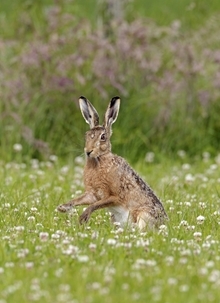 Brown hares have responded well to the many agricultural changes that have taken place over two decades. Although this lowland-dwelling mammal is not rare or endangered it was once very common and widespread but has suffered a 75 per cent decline since the 1960s.
Brown hares have responded well to the many agricultural changes that have taken place over two decades. Although this lowland-dwelling mammal is not rare or endangered it was once very common and widespread but has suffered a 75 per cent decline since the 1960s.
At least two important factors have caused this reduction. Firstly, many predators are now more abundant than they were a century ago and, secondly, mixed farming - which provided ideal year-round food and shelter - has also contributed to their decline.
Indoor Session: To discuss the history, ecology, round the year habitat requirements, population changes and reasons behind the declines that have occurred in some parts of the country.
Discuss what practical steps can be taken to bring back hares where they have declined, including management of existing habitats and the establishment of new habitats within the Stewardship Scheme.
Outdoor Session: On the Estate to look in detail at the habitat requirements of the species and how best to practically integrate these areas in with modern day farming practices. Delegates will look at the various ways to manage existing habitats and create new ones, all the time considering how best to utilise funding opportunities under the current Stewardship schemes.
Planned dates are listed in our events calendar, or contact Lizzie Herring to register your interest.